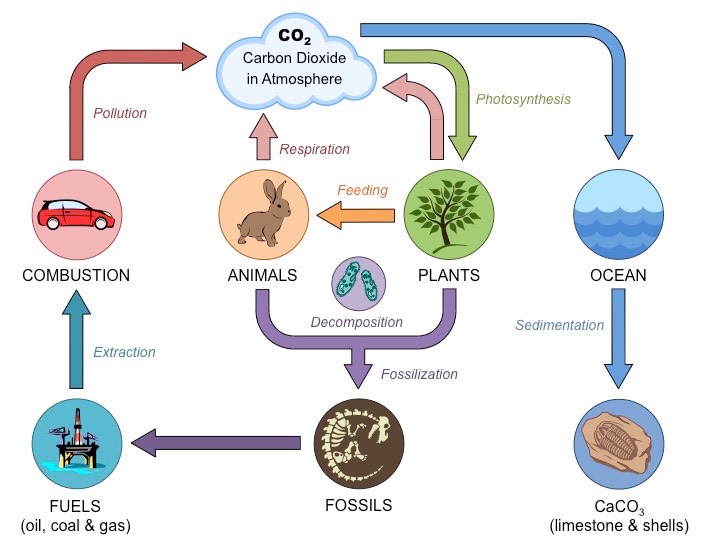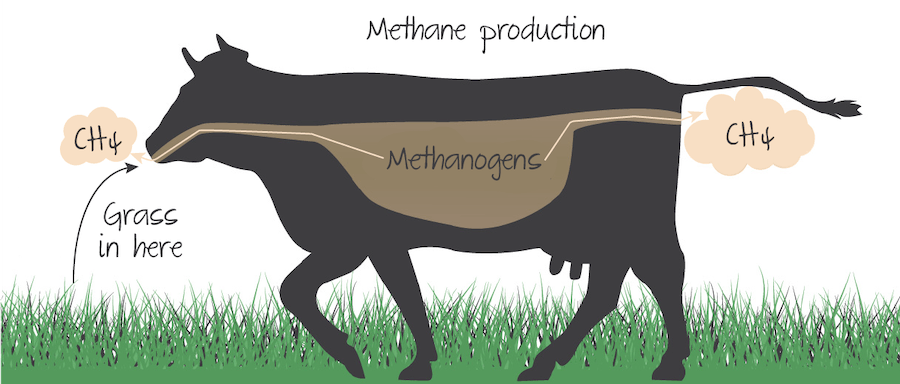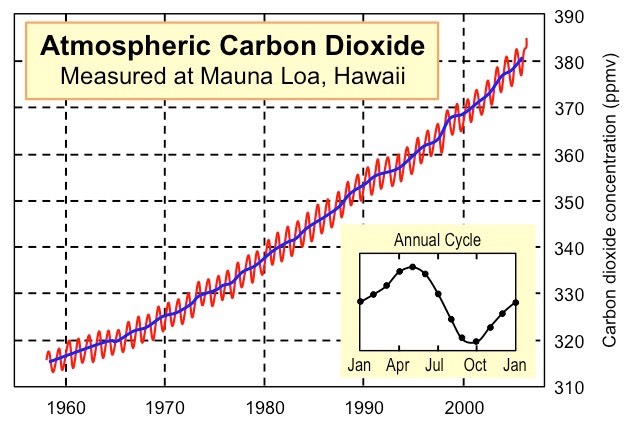4.3 Carbon Cycling
1/21
There's no tags or description
Looks like no tags are added yet.
Name | Mastery | Learn | Test | Matching | Spaced |
|---|
No study sessions yet.
22 Terms
Construct a Carbon Cycle
The carbon cycle is a biogeochemical cycle whereby carbon is exchanged between the different spheres of the Earth
The four spheres are the atmosphere (air), lithosphere (ground), hydrosphere (water / oceans) and biosphere (living things)

List forms of Carbon exchange
Carbon is exchanged between a variety of forms, including:
Atmospheric gases – mainly carbon dioxide, but also methane
Oceanic carbonates – including bicarbonates dissolved in the water and calcium carbonate in corals and shells
As organic materials – including the carbohydrates, lipids and proteins found in all living things
As non-living remains – such as detritus and fossil fuels
List factors affecting the Carbon Cycle
Burning Fossil fuels
Deforestation
Over-population
List the defining qualities of methanogens
Methanogens are archaean microorganisms that produce methane (CH4) as a metabolic by-product in anaerobic conditions
Wetlands (e.g. swamps and marshes)
Marine sediments (e.g. in the mud of lake beds)
Digestive tract of ruminant animals (e.g. cows, sheep, goats)
Methanogens produce methane from the by-products of anaerobic digestion, principally acetic acid and carbon dioxide:
Methane produced by methanogens maybe used as heat ad thus an energy source [biofuel]
![<p><strong>Methanogens</strong> are archaean microorganisms that produce methane (CH4) as a metabolic by-product in <em>anaerobic</em> conditions</p><ul><li><p>Wetlands (e.g. swamps and marshes)</p></li><li><p>Marine sediments (e.g. in the mud of lake beds)</p></li><li><p>Digestive tract of ruminant animals (e.g. cows, sheep, goats)</p></li></ul><p>Methanogens produce methane from the by-products of anaerobic digestion, principally acetic acid and carbon dioxide:</p><ul><li><p>Methane produced by methanogens maybe used as heat ad thus an energy source [biofuel]</p></li></ul>](https://knowt-user-attachments.s3.amazonaws.com/c32d50d5-7ff5-4927-924d-feefe912e7a9.jpeg)
Outline the use of methane to produce CO2
Methane will be naturally oxidised to form carbon dioxide and water (CH4 + 2 O2 → CO2 + 2 H2O), having interacted with hydroxyl radicals in the upper layers of the atmosphere
This is why methane levels in the atmosphere are not very large, even though significant quantities are being produced
Outline coal formation
Since the organic matter is not fully decomposed in waterlogged soils, carbon-rich molecules remain in the soil and form peat
When deposits of peat are compressed under sediments, the heat and pressure force out impurities and remove moisture
The remaining material has a high carbon concentration and undergoes a chemical transformation to produce coal
Outline natural gas formation
Oil (i.e. petroleum) and natural gas form as the result of the decay of marine organisms on the ocean floor
Sediments (e.g. clay and mud) are deposited on top of the organic matter, creating anoxic conditions that prevent decomposition
As a result of the burial and compaction, the organic material becomes heated and hydrocarbons are formed
The hydrocarbons form oil and gas, which are forced out of the source rock and accumulate in porous rocks (e.g. sandstone)
Outline how organic matter is used for methane production, e.g. manure, cellulose.
Metabolic by-product of methanogenic archaeans in anaerobic conditions
Waterlogged mud, landfill sites, guts of ruminants
Either released directly into atmosphere or accumulates in soil and gradually reaches surface
Causes of increased methane production : Cattle farming + landfill disposal of waste food
Define peat and its formation
A mix of plant material (humus) in wetland under anaerobic/acidic conditions, compacted under its own weight, wherein saprotrophs cannot grow (hence dead leaf matter and organic debris cannot be digested)
New layers of leaf litter and other organic debris fall on top of this older layer of material, further compressing it ⇒ peat
Formed in water-logged areas [peat bogs]
Outline the processes involved in Ocean Acidification
Dissolved CO2 forms carbonic acid H2CO3, which may further dissociate to form carbonate CO3 (2-)
This is via the release/dissociation of H protons => Lowers ocean pH
Decreases organism’s metabolism and immune response
Carbonate ions may be absorbed by molluscs and corals to form calcium carbonate
CaCO3 used for hard exoskeletons of marine creatures
Increased dissolution of CO2 :
Increase in H+ production ⇒ Lowers ocean pH
H+ ions combine with free CO3(2-) ions to form Bicarbonate (competes with molluscs who want to form Calcium carbonate)
Reduced availability of CO3(2-) ions for exoskeleton
Degradation of shells due to acidity of ocean + deformed shells due to CO3(2-) scarcity
Examples of arguments supporting Global warming
Claim 1: Climate has changed in the past and current trends merely reflect the Earth’s natural climatic cycle
Data collected from the Vostok ice core shows several changes in climate over the last 400,000 years (Figure 1)
At several points in history, global average temperatures have been warmer than those currently observed
Counter Argument:
Climate changes do occur naturally, but usually not as abruptly as what is seen currently
When global warming occurred abruptly in the past, it was always highly destructive to life (e.g. Permian mass extinction)
Atmospheric CO levels positively correlate to average global temperatures and are currently at the highest levels ever recorded
Define lithification
Lithification – is the process of compressing organic matter over a long period of time until it becomes rock.
Outline why CaCO3 is a source of Carbon
Found in shells of molluscs and exoskeletons of hard corals and crustaceans
CaCO3 does not dissolve in alkaline solutions, hence oceans [slightly alkaline] construct the ideal conditions for the formation of sedimentary rock, e.g. limestone with 12% carbon
List the carbon reservoirs on Earth
Sedimentary rock (limestone deposits)
Biomass of plants/animals [calcium carbonate shells]
fossil fuels
CO2 dissolved in the ocean
Define ruminants
Ruminants – mammals that have a mutualistic relationship with methanogenic archaeans that help them to digest cellulose from the cell walls in the plants they eat. This creates methane, which is released as gas from the mammal.

List the carbon processes involving carbon exchange
Photosynthesis – removes carbon dioxide from the atmosphere and fixes it in producers as organic compounds
Respiration – releases carbon dioxide into the atmosphere when organic compounds are digested in living organisms
Decomposition – releases carbon products into the air or sediment when organic matter is recycled after death of an organism
Gaseous dissolution – the exchange of carbon gases between the ocean and atmosphere
Lithification – the compaction of carbon-containing sediments into fossils and rocks within the Earth’s crust (e.g. limestone)
Combustion – releases carbon gases when organic hydrocarbons (coal, oil and gas) are burned as a fuel source
Define carbon fluxes
Carbon fluxes describe the rate of exchange of carbon between the various carbon sinks / reservoirs
• There are four main carbon sinks – lithosphere (earth crust), hydrosphere (oceans), atmosphere (air), biosphere (organisms)
How does energy flow through a food web
Plants (autotrophs) convert solar energy into chemical energy, locked inside the OG matter, through the conversion of inorganic matter from atmosphere [e.g. CO2] into organic matter [1.a) Sugars
Consumers feed on the plants, hence the energy is transferred up trophic levels through consumption of the plants’ organic material
When an organism dies, the chemical energy stored in carbon compounds in its tissues passes to detritivores and saprotrophs
In a food chain, the arrows represent the transfer of energy, in the form of stored chemical energy in carbon compounds, from one trophic level to the next, by the process of feeding
Energy procured is used for ATP synthesis, to carry out life-sustaining functions
Transfer of energy between trophic levels decreases by 90% per trophic level
Explain trends in CO2 levels
CO2 levels fluctuate annually (lower in the summer months when long days and more light increase photosynthetic rates)
Global CO2 trends will conform to northern hemisphere patterns as it contains more of the planet’s land mass (i.e. more trees)
CO2 levels are steadily increasing year on year since the industrial revolution (due to increased burning of fossil fuels)
Atmospheric CO2 levels are currently at the highest levels recorded since measurements began

How is heat lost to the environment
As heat, due to respiration
As waste products, thus heat, after decomposition by sapro/detri
Indigestible food sorts
Partial food consumption [excluding bones]
Outline the causes of carbon flux changes and their implications
Climate Conditions
Rates of photosynthesis will likely by higher in summer seasons, as there is more direct sunlight and longer days
Oceanic temperatures also determine how much carbon is stored as dissolved CO2 or as hydrogen bicarbonate ions
Climate events like El Nino and La Nina will change the rate of carbon flux between ocean and atmosphere
Melting of polar ice caps will result in the decomposition of frozen detritus
Natural Events
Forest fires can release high levels of carbon dioxide when plants burn (loss of trees also reduces photosynthetic carbon uptake)
Volcanic eruptions can release carbon compounds from the Earth’s crust into the atmosphere
Human Activity
Clearing of trees for agricultural purposes (deforestation) will reduce the removal of atmospheric CO2 via photosynthesis
Increased numbers of ruminant livestock (e.g. cows) will produce higher levels of methane
The burning of fossil fuels will release carbon dioxide into the atmosphere
List the consequences of Global Warming
Dramatic changes in weather patterns
Increased agricultural productivity for cooler countries
Rising sea levels destroy coastal habitats
Loss of biodiversity due to migration of species or extinction (lack of resources/survival advantage)
Migration of species
Spread of diseases
Resource scarcity
Ocean acidification & coral bleaching